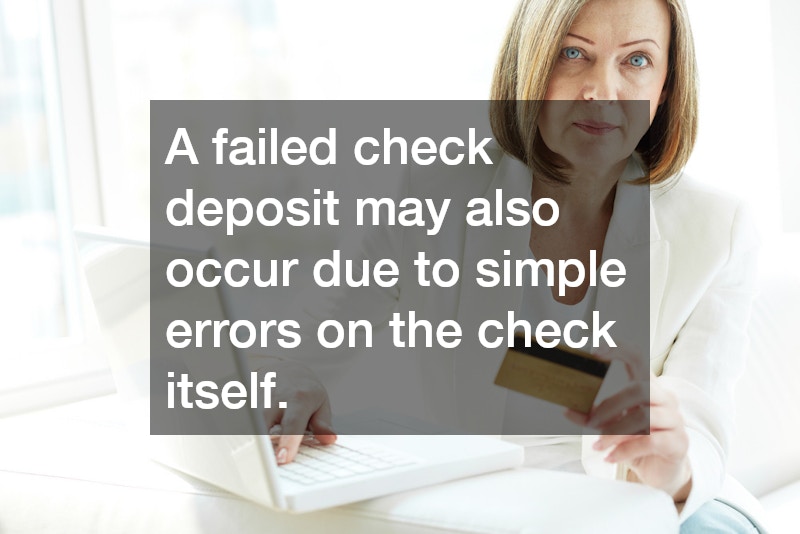
Depositing a check is a common and often simple task, but sometimes things can go wrong, leading to a failed check deposit. This can be frustrating, especially when you rely on that money being available in your account. There are several reasons why a check deposit may fail, ranging from issues with the check itself to problems with your bank account or the deposit method.
Understanding why a failed check deposit occurs can help you resolve the issue quickly and avoid future complications.
1. Insufficient Funds in the Payer’s Account
One of the most common reasons for a failed check deposit is that the person or business that issued the check doesn’t have enough money in their account to cover the amount. When this happens, the check will bounce, and your bank will notify you that the deposit has failed. If you’ve already spent money expecting the deposit to clear, this could result in overdraft fees or other financial inconveniences.
To avoid this situation, it’s always a good idea to verify the legitimacy of the payer, especially if it’s a large amount or from a new source. If the check is from a trusted individual or business, you can contact them to resolve the issue once you’ve been notified of the failed check deposit.
2. Errors on the Check
A failed check deposit may also occur due to simple errors on the check itself. These could include a missing or incorrect date, an incomplete or unclear signature, or a mismatch between the name on the check and the account name. Banks have strict guidelines to ensure that checks are properly filled out to prevent fraud or mistakes, so any irregularities can result in the deposit being rejected.
Before depositing a check, always double-check for accuracy. Make sure the check is dated correctly, the payer’s signature is clear, and your name is spelled exactly as it appears on your bank account. These small details can make the difference between a successful or failed check deposit.
3. Issues With Mobile Check Deposits
Mobile banking apps have made it incredibly easy to deposit checks, but they can also lead to failed check deposits if not done correctly. Common problems with mobile deposits include blurry images, poor lighting, or incomplete scans of the check. If the bank cannot properly read the information on the check, the deposit will likely fail, and you’ll need to retry.
To avoid these issues, ensure that you’re taking clear, well-lit pictures of both sides of the check. Follow the prompts from your bank’s app carefully, and make sure the entire check is captured within the frame. It’s also a good idea to keep the physical check in a safe place until the deposit is confirmed.
A failed check deposit can be a frustrating experience, but it’s usually caused by one of a few common issues. Insufficient funds in the payer’s account, errors on the check, problems with mobile deposits, stale checks, or issues with your bank account are all potential culprits. By understanding these possible causes, you can troubleshoot the issue and take steps to prevent future failed check deposits. If you continue to experience problems, contacting your bank for assistance is the best course of action.
.




